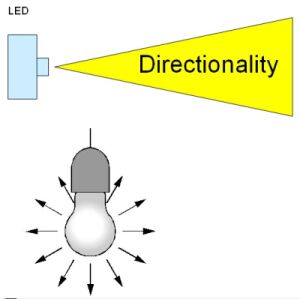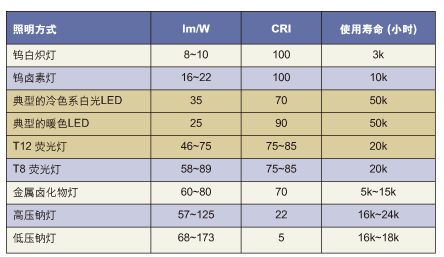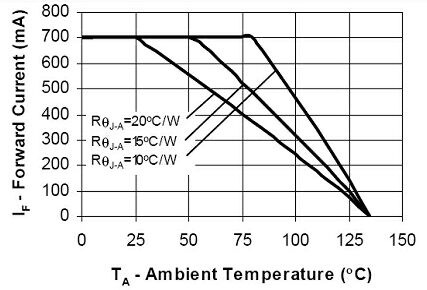The key issue of high-brightness LED in automotive lighting applications
There is no doubt that the use of high-brightness LED lighting will become the main feature of future cars, thanks to the many basic advantages of LEDs over traditional incandescent lighting solutions. In addition, the use of LED lighting can also drive changes in car design technology and design style. However, just like any innovative technology, LED still needs to overcome many difficulties before it is widely used in automotive lighting.
Key features
1. Reliability and service life
The expected service life of LEDs is 50,000 hours, compared with 20,000 hours for halogen lamps and 3,000 hours for tungsten incandescent lamps. Compared with incandescent lamps, the structure of the LED is solid, not easily affected by vibration, and the light output brightness will not significantly decrease during use. Lighting solutions based on multiple LEDs also have the advantage of "redundancy", even if one LED fails, you can continue to use the lighting device. Proper use of LEDs (especially correct control of LED temperature) can effectively extend the life expectancy of LEDs. On the contrary, if the temperature is too high, the LED is easily damaged. LED application in automotive lighting also involves many legal definition issues. Most countries have a clear definition of brake light or headlight failure-lights on or off. However, for lamps using multiple LEDs, it is difficult to accurately define whether the lamp has been damaged. Manufacturers and legislative bodies are defining how to use LEDs.
2. Efficiency / lumens per watt
Compared with standard incandescent lamps, LEDs can produce more light output per unit of electrical energy. However, when compared with halogen lamps, the advantage of the actual light output of the LED is not obvious. The latest LEDs have excellent lumens per watt values, but some values ​​are obtained under optimized conditions, and are not usually obtained under the highest output conditions. Generally speaking, when the LED current increases, the light output does not increase linearly. Therefore, even if the LED outputs x lumens at 0.5A, it will not output 2x lumens at 1.0A.
3. Response speed
Taking the brake lights and direction indicator tubes as an example, suppose the vehicle speed is 125 km / h, that is, 35 m / s. The hot start time of the incandescent lamp is about 250 milliseconds, and the fast-response LED can be emitted about 8 meters earlier. Brake warning to effectively avoid collisions. The same goes for the indicator light.
4. Directionality
Another key feature is the way the LED illuminates. Unlike incandescent lamps, LEDs emit light only through one surface, which is good for headlights and chart lights, but may not be suitable for other cabin lighting applications (Figure 1).

Figure 1: Unlike incandescent lamps, LEDs emit light with directionality.
Method of controlling LED
Current control
A basic problem with LEDs is that LEDs are devices controlled by current, and their voltage drop is relatively low. The simplest method is to use resistors to limit the current of the LED, but this method is not suitable for a system with a rated voltage of 12V or 24V battery, because the actual voltage of the battery is from 6V to 18V or 12V to 36V. Therefore, if brightness needs to be maintained, constant current control must be performed.
2. Linear control of current
Linear control refers to keeping the current through the LED constant through a linear regulator. Linear control is very inefficient in some cases. For example, a single 1A (3W) LED with a forward voltage of 3.5V requires the regulator to reduce the rated 12V power supply to 8.5V while maintaining 1A current. This uses 3W LED Will waste 8.5W of power. Linear current control is the technology that produces the least noise, and from an EMC perspective, linear current control is the safest.
3. Switching regulator
Although inductive switching constant current technology generates more electronic noise, it is more efficient. Depending on the number of LEDs used, buck or buck / boost regulators can be used.
4. EMC issues
Radiation and conduction noise must be reduced as much as possible, and the noise should be controlled within the allowable limit. Although the frequency of the PWM method is fixed and relatively easy to filter, but because the LED load is relatively stable, if appropriate measures are taken, the hysteresis controller and PFM are suitable choices. The development trend of the switching regulator is that the frequency will be higher to reduce the volume of the inductor / capacitor. For automotive applications, this is always the best solution. Keeping the frequency at a low level helps avoid interference problems.
The fundamental frequency "jitter" or "expansion" technology does help to meet similar peak EMC test requirements, but the best way is not to generate any radiation, which is difficult for any switching regulator to achieve.

Radiant heat, conduction heat and thermal management
One of the key problems and the biggest challenges for users who use high-brightness LEDs (especially the automobile manufacturing industry) is the self-heating of LEDs. The lumens per watt of LEDs have been greatly improved, but in fact most of the electrical energy of LEDs is converted into conduction heat. LED can produce less radiant heat suitable for cabin lighting, but in cold climates, the radiant heat of the headlight can effectively melt the snow on the lens. Therefore, thermal management is the key to reliable LED control.
Thermal management mainly refers to the reduction of current when the temperature increases. The advantage of using a high-brightness LED is that when the current changes greatly, the eyes cannot perceive the change in brightness. Generally speaking, the current drops by 25%, and the brightness change of a single LED is not obvious.
However, LEDs will change color with changes in temperature and current. Whether this will affect automotive lighting applications remains to be discussed. Whether the spectrum of LED is suitable for lighting and whether it will affect the driver's sense of distance under the general night vision effect, these issues may be more important.
Using the PWM method to reduce the brightness ratio, rather than DC control, can get a larger light-dark ratio, and the color temperature will not change, so using the PWM method to reduce the brightness is a better method. However, the choice of frequency is also important. It is generally considered that a frequency of 200 Hz is better because the human eye does not feel the flicker of 200 Hz light, and in addition, a lower frequency ensures that the switching frequency is lower than the switching regulator. However, it is necessary to anticipate the potential problems of headlights with stroboscopic effects. A more appropriate method is to use a higher frequency to adjust the brightness of the LED, so as to avoid the "deflection" effect. In addition, the inductor must be carefully selected to avoid audible noise in the car.
LED temperature sensing is also a problem to be solved. The thermistor is a widely used method, but the thermistor must be used very carefully. The temperature control response should be set to the upper limit of the temperature corresponding to the current that the LED needs to reduce. When the ambient temperature decreases, simple temperature control can cause the LED current to increase. Figure 2 shows the typical LED response to ambient temperature requirements.

Figure 2: Typical response requirements for LEDs to ambient temperature.
Application range of LED
In automotive applications, LEDs are mainly used for exterior and interior lighting. External lighting equipment involves thermal limits and EMC issues. At the same time, there are many complex standards for unloading load tests. For example, whether the voltage is 40V, 60V, 80V, or 100V LED drive circuit must meet the strict requirements of automotive EMC specifications. For LEDs driven by high-efficiency, inductive switching regulators, meeting the above requirements is somewhat difficult, and all precautions will increase the cost of the overall solution. In the field of external lighting applications, headlights, fog lights and indicator lights are the target applications.
Because of the advantages of LEDs, LEDs can be widely used to create a comfortable environment in the car, such as instrument lights, pedal lights, chart lights, rear fog lights, rear brakes and indicator lights, and are used to display the car "entertainment. "Information" flat panel display mixed color backlighting and atmospheric lighting will further increase the application of LED.
Zetex LED products
The BSP75 device for simple switching of LED loads is a reliable FET with ESD protection, overheating, load sag, overcurrent and overvoltage protection. It is suitable for switching LEDs with currents up to 1.2A.
If the current needs to be monitored at the same time (for example, to indicate the failure of the brake LED cluster), Zetex's current monitor ZXCT1081 can adapt to 60V voltage transients and 125 ° C operating temperature. For automotive LED control, Zetex provides a series of switching regulators with a drive current of up to 1A. ZXLD1350, ZXLD1360 and ZXLD1362 are hysteretic buck converters that can drive 1W LED strings and 3W LED strings. These devices can ensure reliable control of LEDs with few components, and can achieve shutdown, soft start or PWM dimming and temperature control through a single pin.
We offer rechargeable li ion and Lipo Battery cells from industry's leading manufacturers, Panasonic cells, Sanyo cells, Moli cell, ATL cells, BAK cells, DLG cells, HYB cells, Samsung cells, LG cells, Maxell Cells. With contacts inside big manufacturers, we are able to supply authentic cells in wide variations of sizes, capacities, and power performances to meet your needs. In addtion we provide processing service to add proteced PCB in cell, to put heat shrink tubes, wires with designated connector, or to design unique plastic case with coaxial DC port.

Rechargeable Batteries,Rechargeable Lithium Batteries,Rechargeable Cell,Lithium Ion Rechargeable Batteries
Asarke Industry Co., Limited , https://www.asarke-industry.com